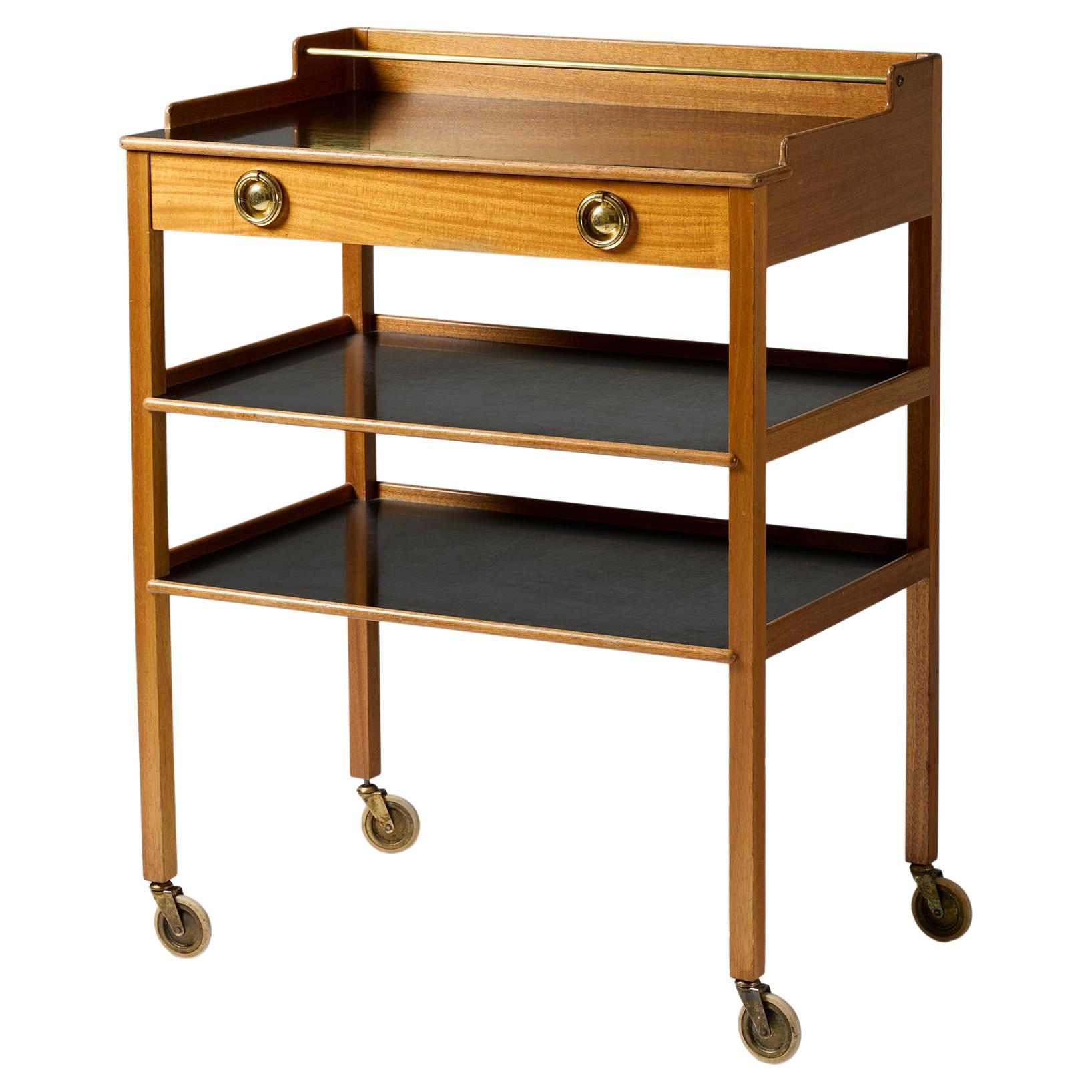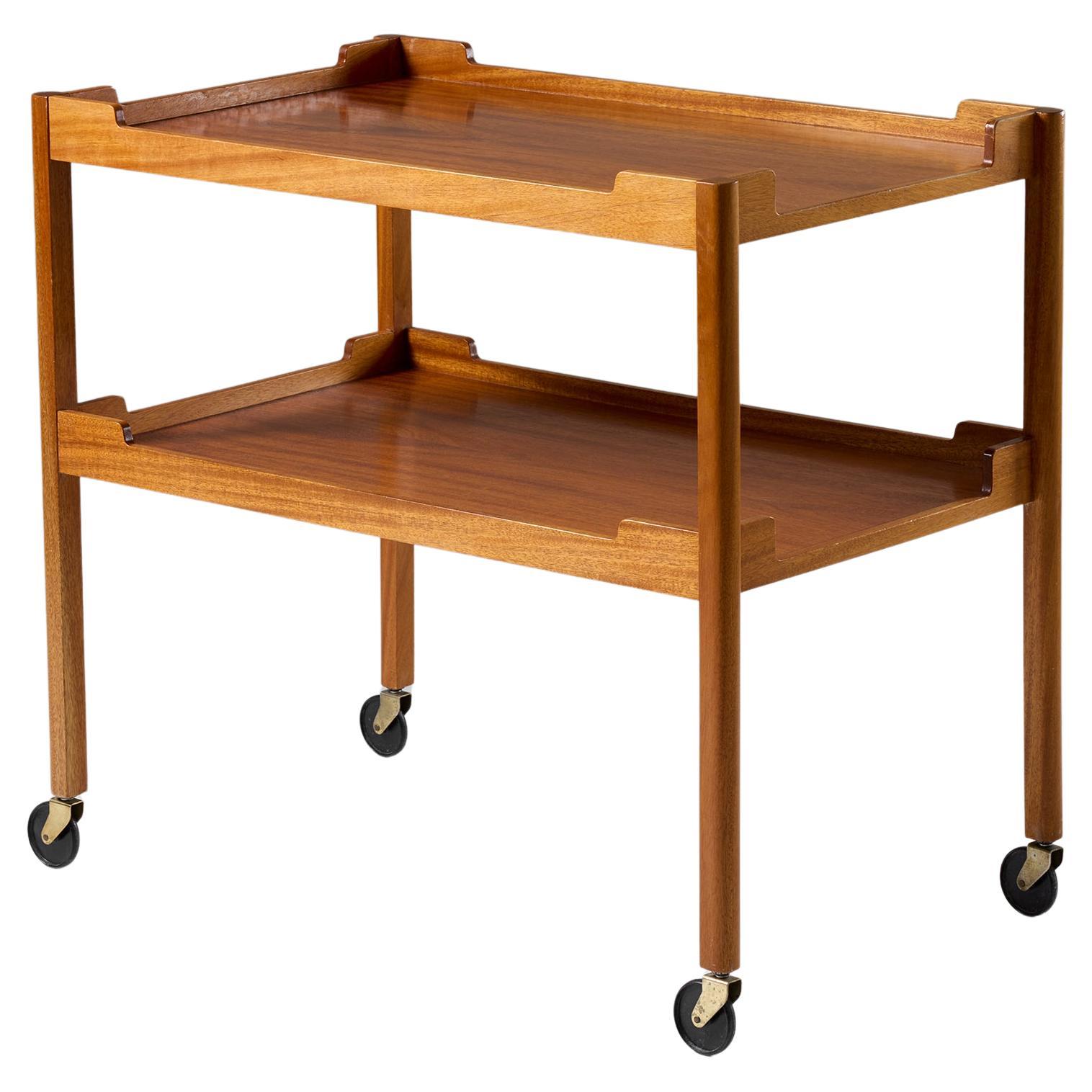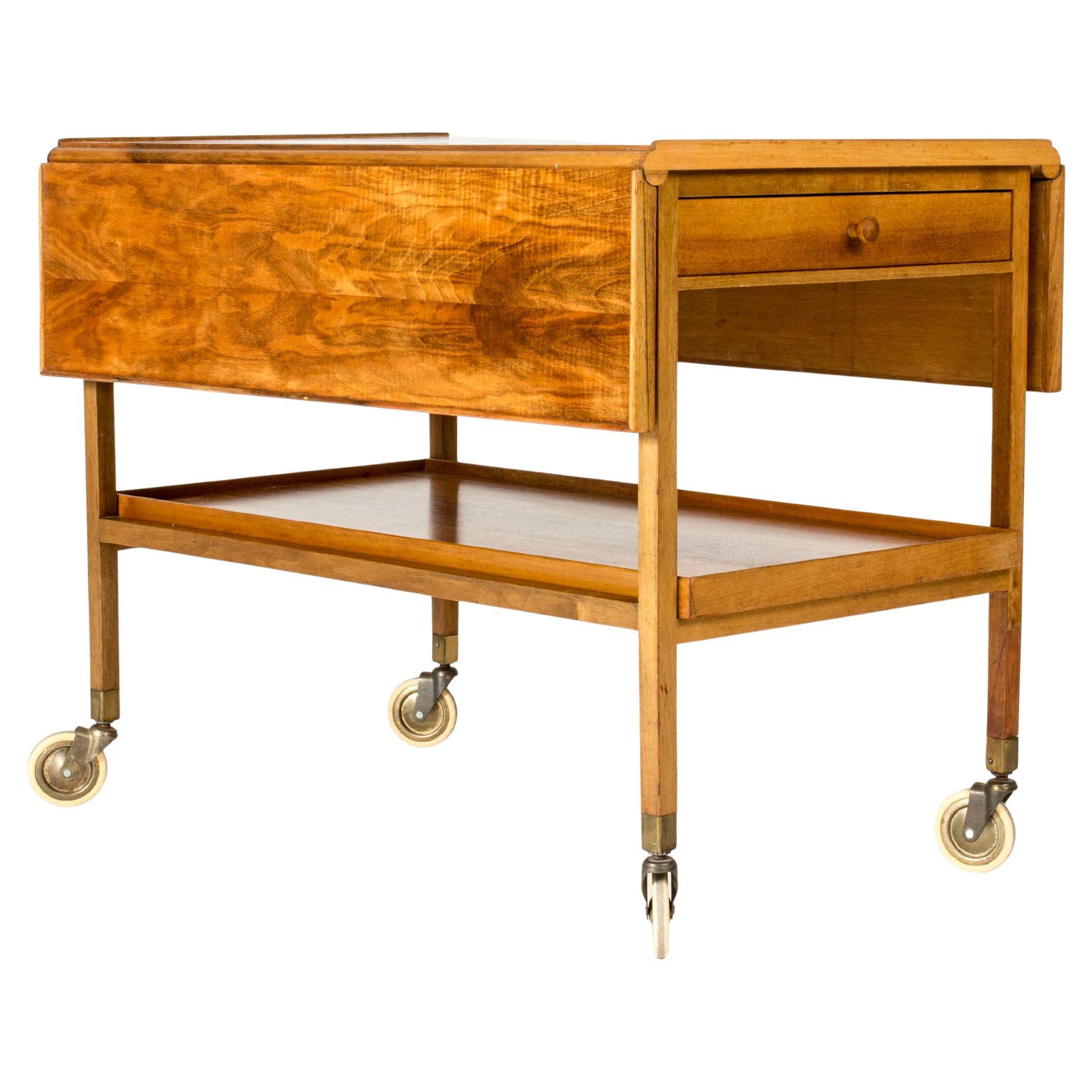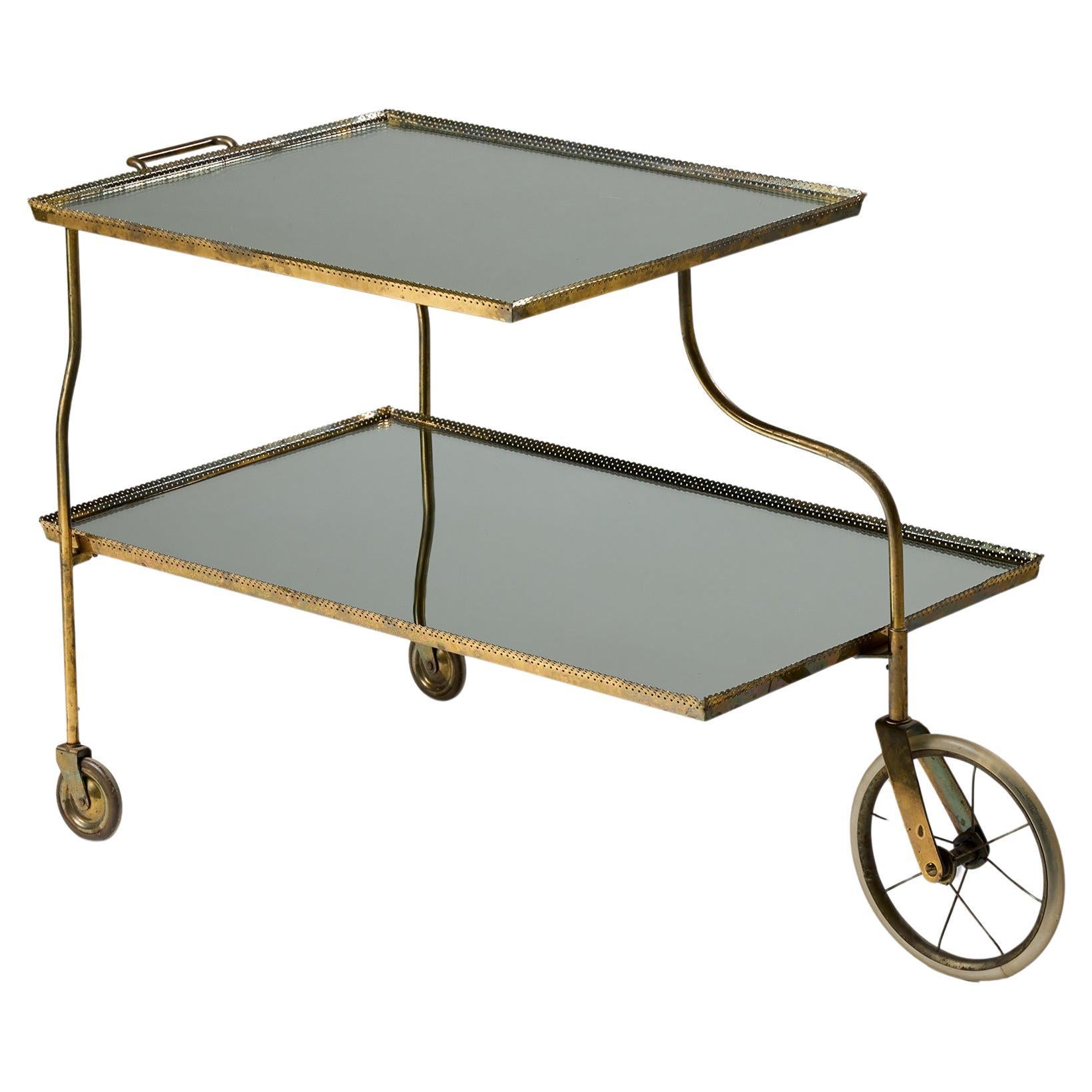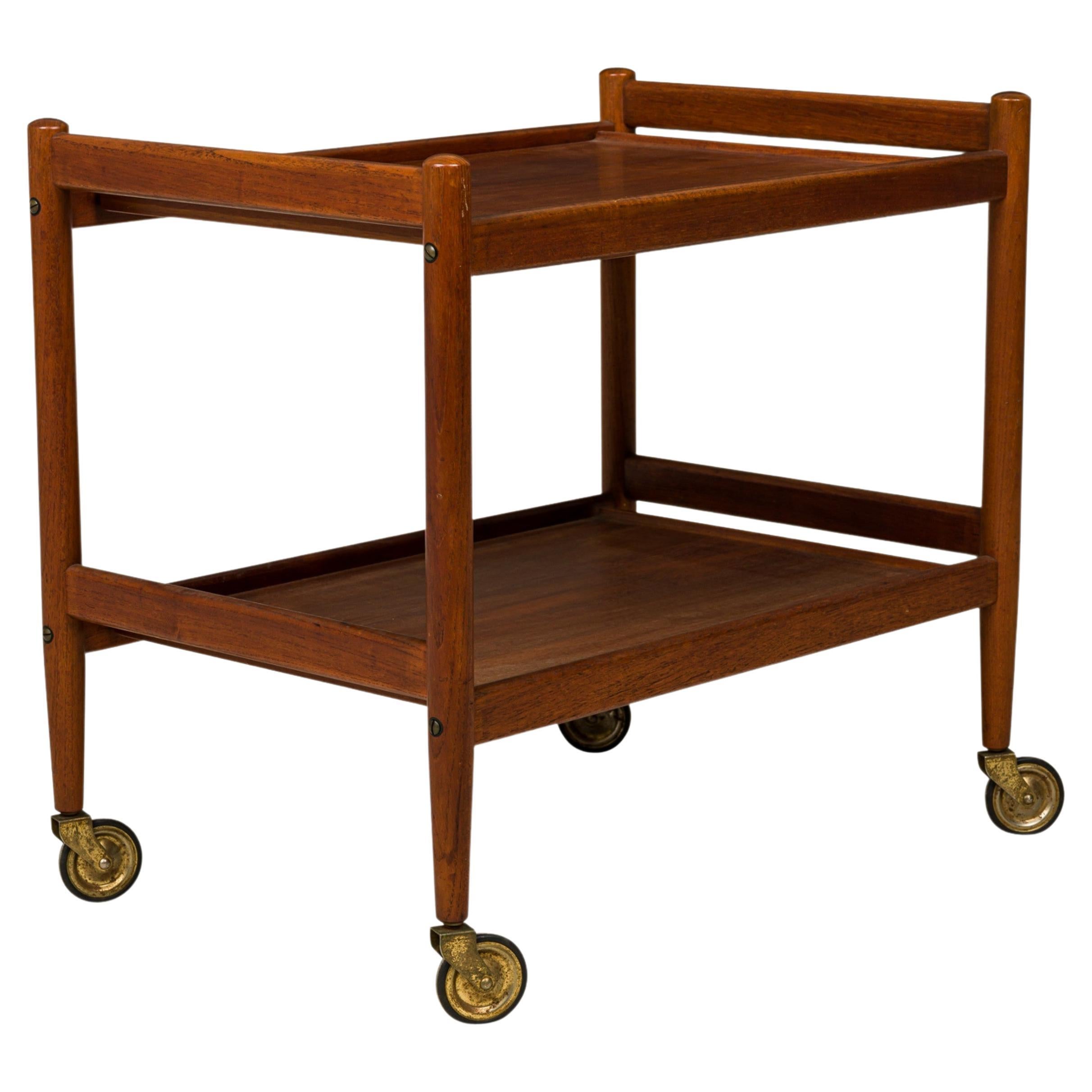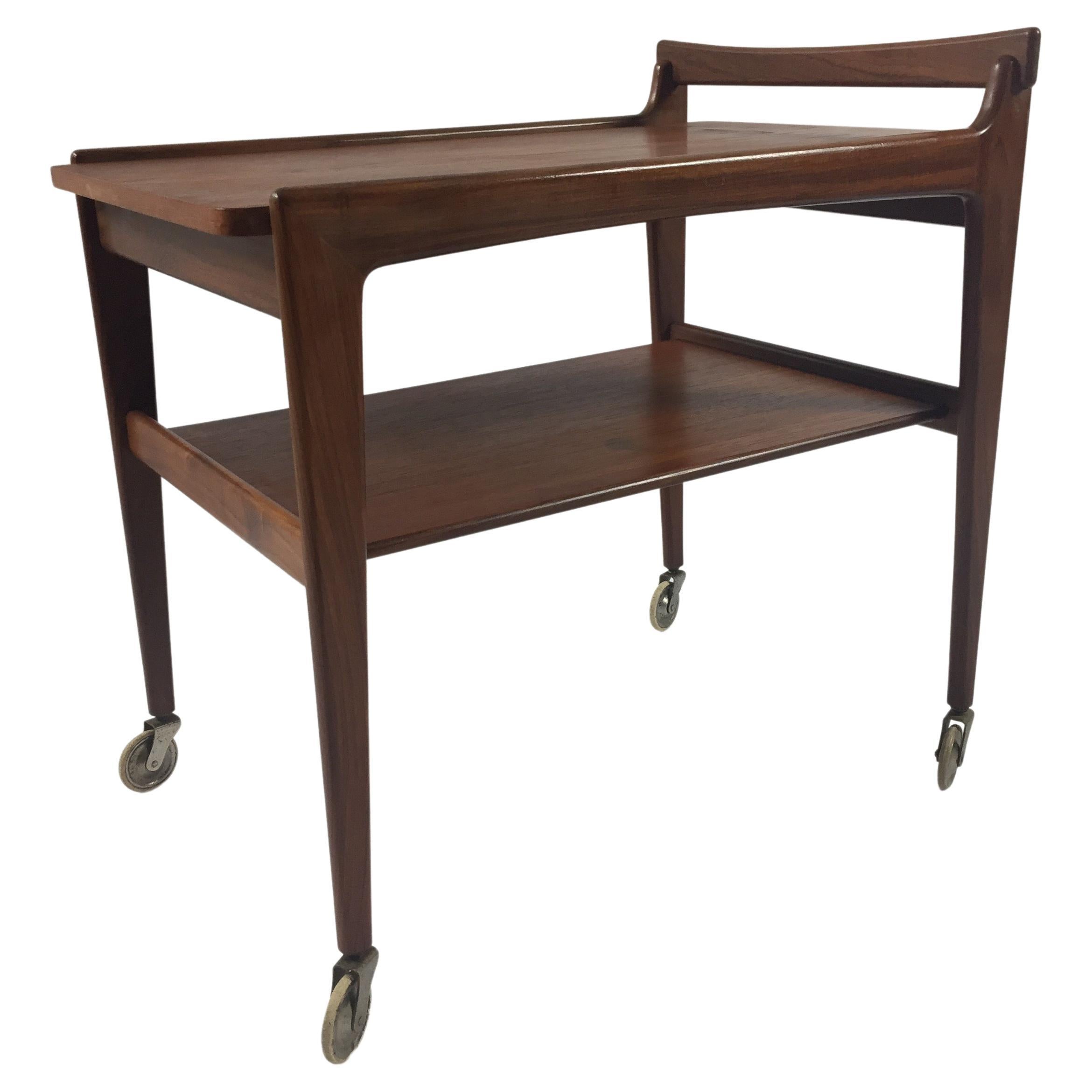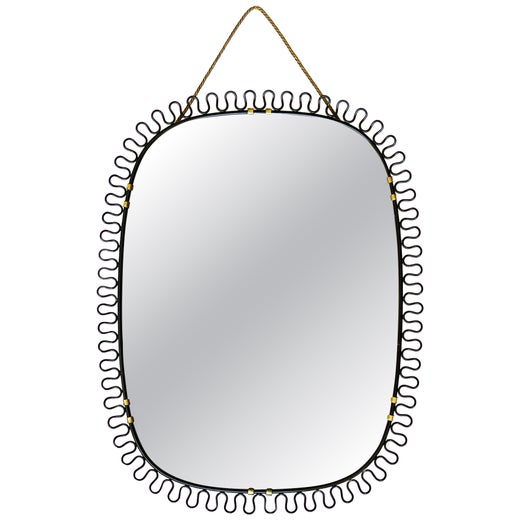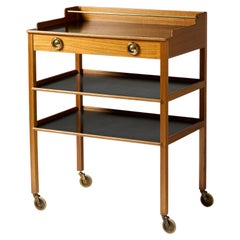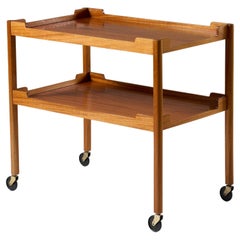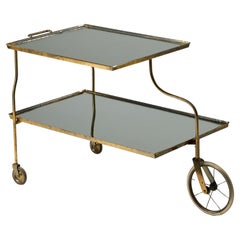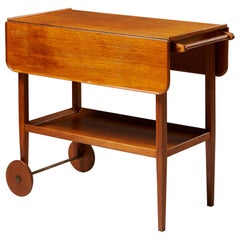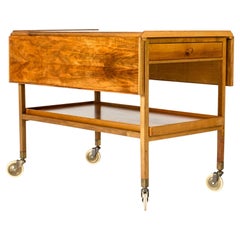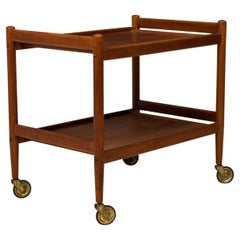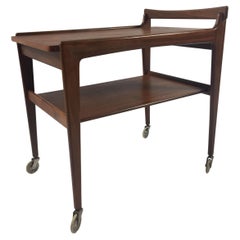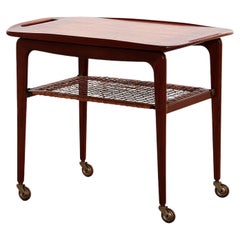Walnut and Brass Serving Trolley Model 756 by Josef Frank for Svenskt Tenn 1940s
Acerca del artículo
- Creador:Josef Frank (Diseñador)
- Dimensiones:Altura: 65 cm (25,6 in)Anchura: 89 cm (35,04 in)Profundidad: 80 cm (31,5 in)
- Estilo:Moderno de mediados de siglo (Del período)
- Materiales y técnicas:
- Lugar de origen:
- Época:
- Fecha de fabricación:1940s
- Estado:
- Ubicación del vendedor:Stockholm, SE
- Número de referencia:1stDibs: LU1006631541282
Josef Frank
El arquitecto austriaco y diseñador de muebles y telas Josef Frank fue una voz destacada de un modernismo suave y humano . Su defensa de los ambientes cálidos, confortables y de estilo ecléctico ejerció una gran influencia en Suecia, su país de adopción, y ahora se le considera un precursor de la reacción contra el modernismo doctrinario y la aceptación de lo casero que se produjo a finales de los años sesenta.
Hijo de un próspero fabricante textil vienés, Frank estudió arquitectura en Universidad Tecnológica de Viena, graduándose en 1910. Desde los primeros años de su práctica, marchó en contra de las disposiciones y decoraciones arquitectónicas ordenadas y simétricas prescritas por contemporáneos como Adolf Loos.
Frank proyectó habitaciones de formas variadas y exigió una disposición flexible del interiorismo. Sus muebles son ligeros y fáciles de mover, y sus sillas siempre son de madera, casi siempre con brazos curvados al vapor y respaldos de listones. Frank detestaba abiertamente el mobiliario tubular de acero y la estética de "máquina de vivir" promovida por Le Corbusier y Ludwig Mies van der Rohe y otros directores de la Bauhaus . "El hogar no debe ser una mera máquina eficiente", dijo Frank en una ocasión. "Debe ofrecer confort, descanso y comodidad.... No hay principios puritanos en la buena decoración de interiores".
Frank -que era judío- intuyó las terribles implicaciones del ascenso del nazismo en Alemania y Austria, y en 1933 se trasladó a Estocolmo con su esposa sueca, Anna. Se convirtió en el jefe de diseño del fabricante de muebles Svenskt Tenn y encontró un complemento cultural perfecto para su marca de creaciones sencillas, relajadas y luminosas. Al igual que muchos modernistas -en particular Charles and Ray Eames y Alexander Girard - Frank sentía un profundo amor por el arte popular , que influyó en sus diseños de una amplia gama de telas para tapicería ricamente estampadas y llenas de color, muchas de ellas basadas en el clásico motivo del "Árbol de la Vida".
En todos sus diseños, Frank se inspiraba en una amplia variedad de fuentes. En sus muebles se aprecian rastros de motivos asiáticos, Rococó, Renacimiento italiano, Artesanía escandinava e incluso Chippendale piezas. Como tal, la obra de Frank -el simpático modernista- se encuentra a gusto en cualquier tipo de decoración.
Encuentra almohadas vintage Josef Frank , sillones, lámparas de pie y otros muebles en 1stDibs.
- EnvíoRecuperando presupuesto…Envío desde: Stockholm, Suecia
- Política de devolución
Más de este vendedor
Ver todoVintage, Década de 1950, Europeo, Aparadores
Latón
Vintage, Década de 1940, Sueco, Mesas de servicio
Caoba
Vintage, Década de 1940, Sueco, Carros y carros de bar
Latón
Vintage, Década de 1950, Sueco, Moderno de mediados de siglo, Aparadores
Teca
Vintage, Década de 1950, Sueco, Moderno de mediados de siglo, Mesas auxi...
Latón
Vintage, Década de 1960, Sueco, Moderno de mediados de siglo, Mesas de s...
Bambú, Ratán
También te puede gustar
Vintage, Década de 1950, Sueco, Escandinavo moderno, Carros y carros de bar
Caoba
siglo XX, Danés, Moderno de mediados de siglo, Carros y carros de bar
Madera, Teca
Vintage, Década de 1960, Danés, Moderno de mediados de siglo, Carros y c...
Teca
Vintage, Década de 1960, Danés, Escandinavo moderno, Carros y carros de bar
Teca
Vintage, Década de 1960, Danés, Moderno de mediados de siglo, Carros y c...
Fórmica, Palo de rosa
Vintage, Década de 1970, Danés, Moderno de mediados de siglo, Carros y c...
Plástico, Teca
